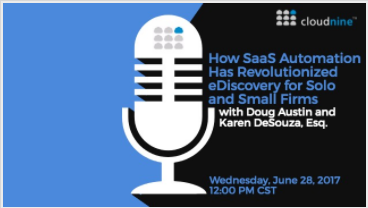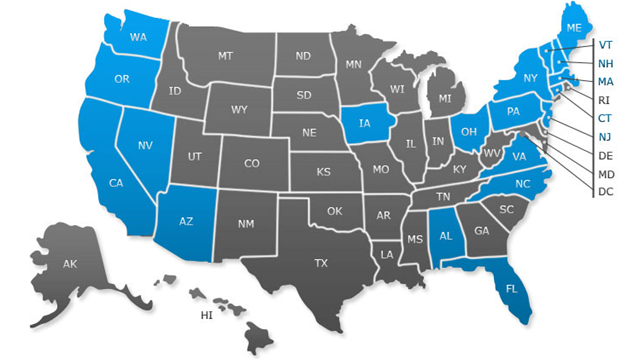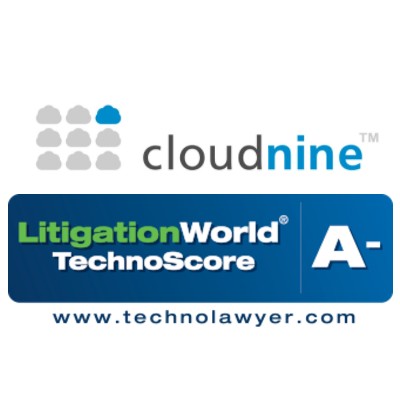Cloud Data is Within Defendant’s Possession, Custody and Control, Court Rules: eDiscovery Case Law
This case is a few months old, but is one of the cases we will cover in next week’s webcast Key eDiscovery Case Law Review for First Half of 2017 (click here to sign up)…
In Williams v. Angie’s List, No. 1:16-00878-WTL-MJD (S.D. Ind. April 10, 2017), Indiana Magistrate Judge Mark J. Dinsmore found that the plaintiffs “have met their burden of demonstrating” that the defendant has a legal right to obtain background data in Salesforce and that “Plaintiffs request for production properly seeks documents within Angie’s List’s ‘possession, custody, or control’ under Rule 34(a).” He also denied the defendant’s request for cost shifting.
Case Background
In this case where 48 current and former employees of Defendant claimed they were entitled to “substantial compensation” for hours worked without pay, those plaintiff claimed that the defendant instructed them to underreport their overtime hours on their computerized time records. Because the plaintiffs frequently worked from home, they sought production of “background data” automatically recorded while they were working in the defendant’s sales platform, Salesforce, in an effort to “close the gaps” allegedly left by the other records.
The defendant argued that the plaintiffs’ request for the Salesforce records falls outside of Rule 34(a)(1) because the records are outside of the defendant’s “possession, custody, or control” because Salesforce is a third-party provider of services and the defendant has no greater rights to the background data than any other person. The defendant also cited a $15,000 invoice it had received from Salesforce for the background data it had already provided to the plaintiffs. The plaintiffs, in reply, argued that the defendant’s argument is belied by their conduct in producing a year’s worth of background data. The defendant also argued if the Court grants the Motion, it should apportion some or all of the costs of production to the plaintiffs.
Judge’s Ruling
In making his ruling, Judge Dinsmore observed that “evidence before the Court demonstrates that Angie’s List and Salesforce have a longstanding contractual relationship and that the background data is recorded ‘for’ Angie’s List as part of the ordinary course of their business relationship. Even while end users such as Angie’s List ‘ordinarily’ do not access such data, the evidence clearly demonstrates that they are able to do so upon asking. In fact, the most compelling fact before the Court is that Angie’s List, despite dragging its feet and protesting vociferously, were actually able to retrieve and produce one year’s of the background data, collected for Angie’s List as part of its use of Salesforce’s sales platform, to Plaintiffs in discovery. The fact that Angie’s List has already produced one-third of the requested data, coupled with the evidence demonstrating the relationship between Angie’s List and Salesforce, compels the conclusion that Angie’s List has a ‘legal right to obtain’ the discovery sought.”
As a result, Judge Dinsmore concluded that “Plaintiffs request for production properly seeks documents within Angie’s List’s “possession, custody, or control” under Rule 34(a).” After acknowledging the Court’s authority to “proportion the costs of e-discovery in cases of undue cost or burden”, Judge Dinsmore considered eight proportionality related factors to rule against cost shifting of some of the production costs to the plaintiffs.
So, what do you think? Should the plaintiffs have been required to split the costs? Please share any comments you might have or if you’d like to know more about a particular topic.

Disclaimer: The views represented herein are exclusively the views of the author, and do not necessarily represent the views held by CloudNine. eDiscovery Daily is made available by CloudNine solely for educational purposes to provide general information about general eDiscovery principles and not to provide specific legal advice applicable to any particular circumstance. eDiscovery Daily should not be used as a substitute for competent legal advice from a lawyer you have retained and who has agreed to represent you.









